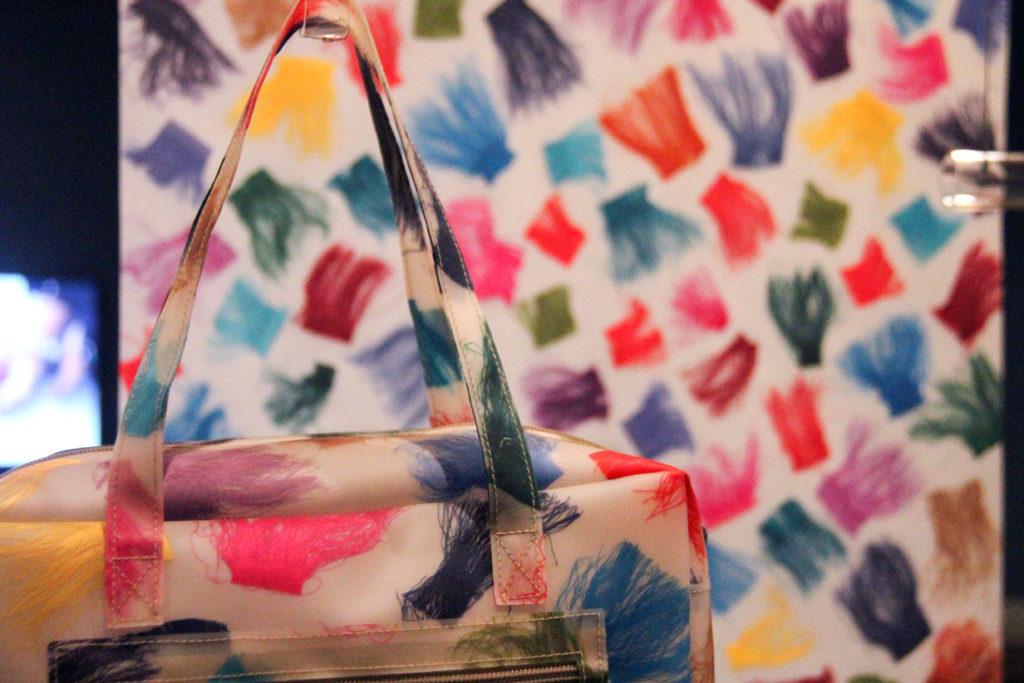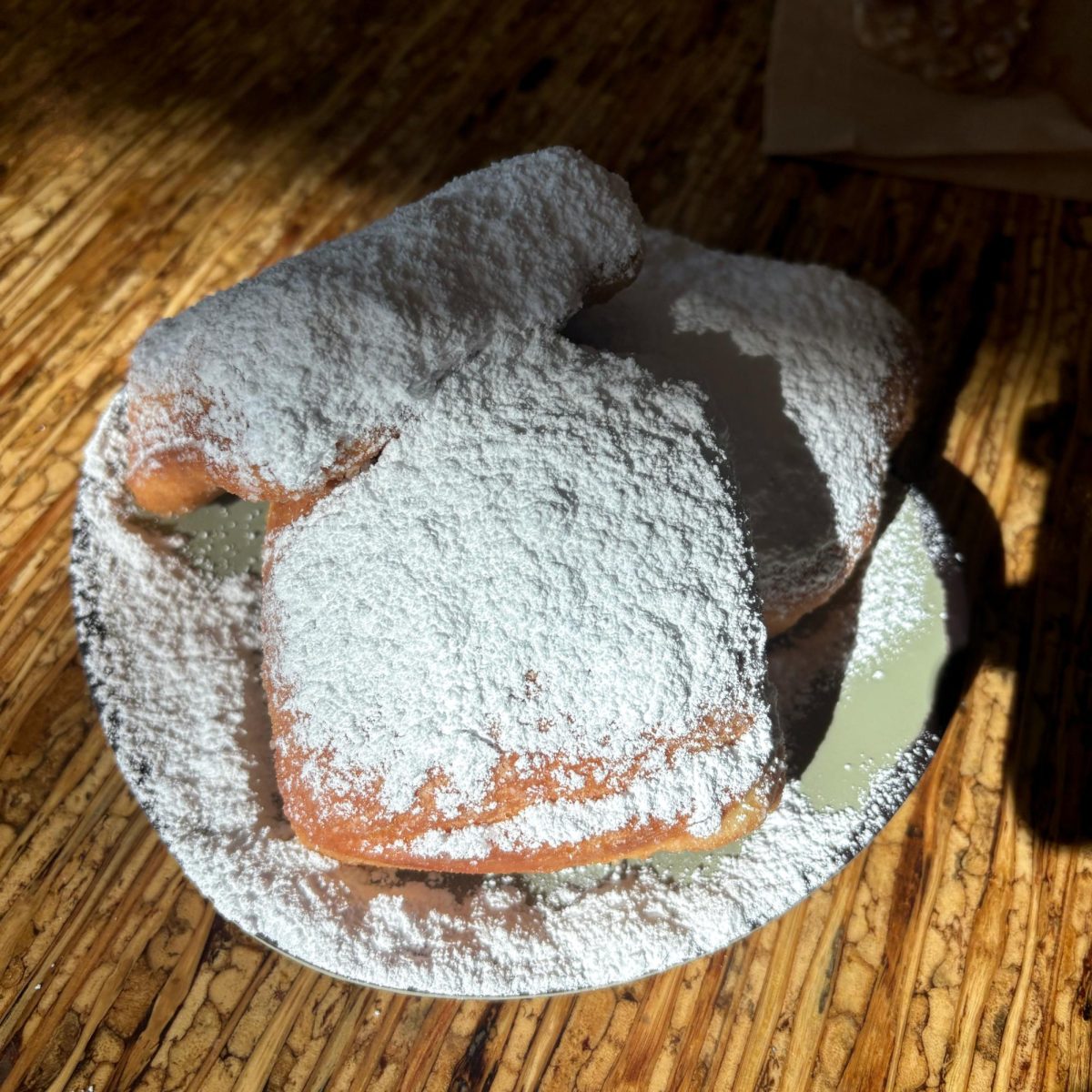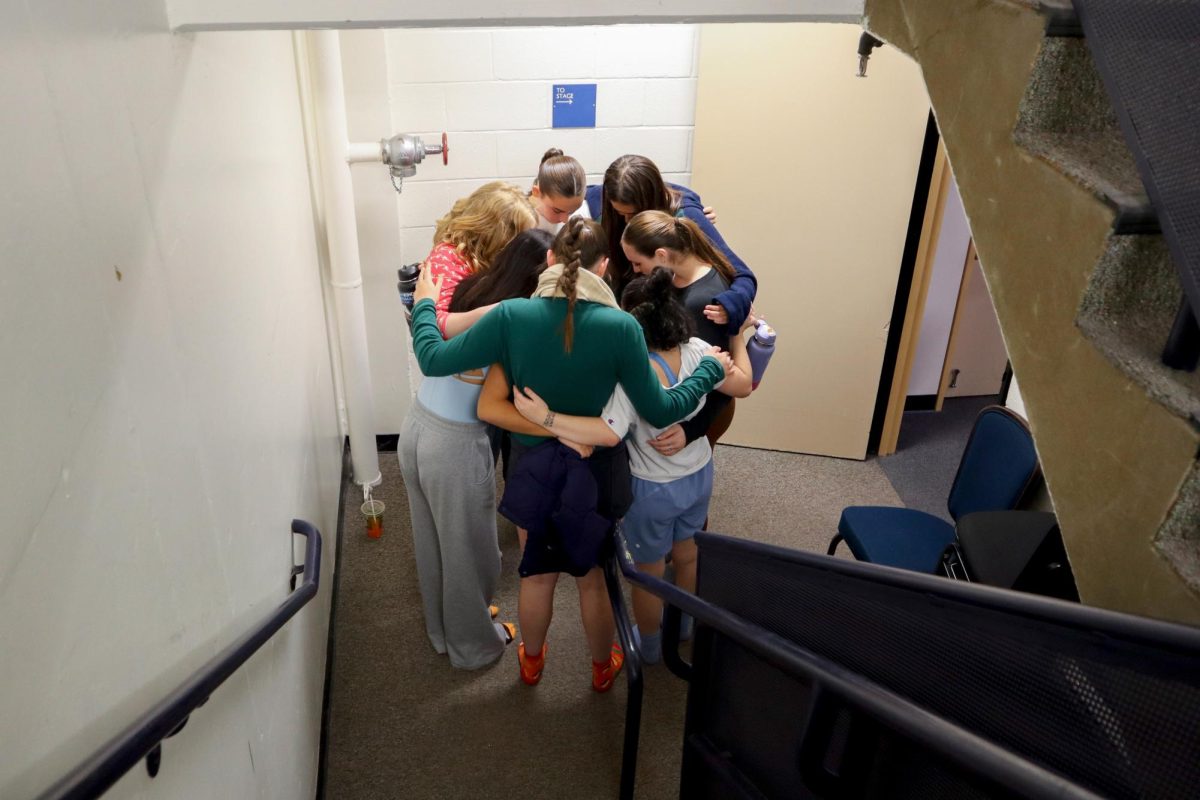A fashion exhibit, featuring the work of three designers who focus on sustainability and reducing textile waste, will open at the Textile Museum Saturday.
The exhibit, called “Scraps: Fashion, Textiles, and Creative Reuse,” was organized by the Cooper Hewitt Smithsonian Design Museum in New York City, and its D.C. visit is the only other venue for the display. The showcase spotlights more than 40 works, ranging from dresses comprised of scraps of fabric to white bags with vibrant pops of color created from silk selvedges produced on woven fabric during manufacturing to prevent unraveling.
Some highlights from the exhibition include a stack of 10 trays of frozen silk cocoons and slit silver-leafed washi paper that are used for weaving. One video in the exhibit shows the process of making woven silk sandals made from the skeins and another shows fashion designer Christina Kim taking scraps and piecing them together into new designs.
Camille Ann Brewer, the museum’s curator of contemporary art, said these exhibiting designers, who put recycling textiles at the forefront of their business model, are starting a dialogue about scrap waste.
“Waste is generated at each step of the textile production process,” Brewer said. “I think that if more people were aware, they would make different choices on how they buy clothing.”
The textile fashion industry produces millions of tons of waste every year through many processes such as yarn production, weaving, knitting, dyeing and finishing, she said. She added that clothing production doubled from 2000 to 2014 with about 15 percent cast aside as waste.
“The show is designed to start a dialogue and engage people about how they buy clothes, how they reuse clothes, how they reuse garments,” she said. “Consumer behavior will change the industry.”
Luisa Cevese, the founder of the Milan-based design studio Riedizioni, embeds colorful silk selvedges into polyurethane to create waterproof material for purses and wallets.
Vibrant silk pieces adorned her white bags, which added eye-catching pops of color and a feathery, fuzzy texture. On the ground below the suspended bags are colorful scraps in red, yellow, pink, purple and blue.
Christina Kim, the founder of the Los Angeles-based fashion brand dosa, works with gossamer cloth used to craft saris worn in India and Bangladesh.
[gwh_image id=”1036708″ credit=”Jack Borowiak | Hatchet Staff photographer” align=”none” size=”embedded-img”]Christina Kim, founder of the Los Angeles-based fashion brand dosa, uses scraps of various materials to make blouses, dresses and even tapestries.[/gwh_image]
Kim’s pieces used pastel colors of mostly orange, blue, peach and cream fabric fallout, which is leftover material from clothing patterns. Kim’s dresses and skirts are pieced together from different scraps of fabric into new, wearable fashion with beautiful and delicate stitching.
Reiko Sudo, the co-founder of Tokyo textile design firm NUNO, uses silk waste with a focus on the outermost layer of the silk cocoon that protects the silk fiber underneath and a residue that sticks to the spinning shaft to craft his textiles.
The exhibit’s opening day Saturday also marks the first of a two-day free festival that will explore the art of recycling. From 11 a.m. to 4 p.m. on Sept. 2 and 3, you can watch fiber artists weave with recycled material, design a paper dress, create upcycled jewelry and see a sheep get sheared while enjoying live music and dancing.
The exhibition is on the third floor and will be open until Jan. 7, 2018. The museum’s gift shop will sell purses and jewelry made from recycled materials like newspapers and copper from cars, including Cevese’s bags ($425 for a tote and $35 for a card holder).




